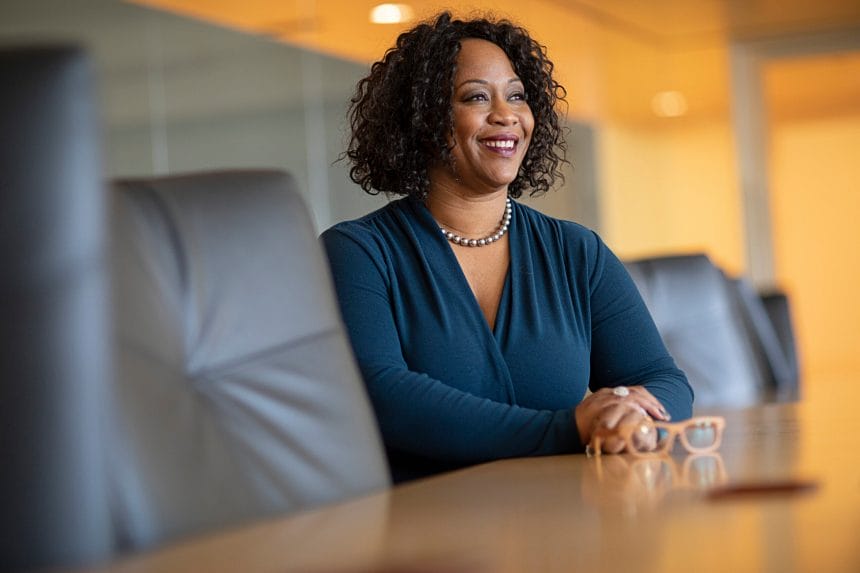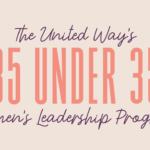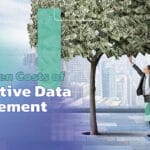What does it mean to be seen? This is a human desire that is important to all. It might look different to each of us, but it speaks to “belonging” and, ultimately, inclusion. Much of the conversation around diversity and inclusion is noticing the “differences,” and while differences do set people apart, there is something compelling about being known and the shared hope of belonging and contributing to a larger shared purpose.
As leaders, cultural competency is an essential skill. We have not made enough progress toward inclusion and equity. We have to do things differently. We must move faster, be more deliberate and have a greater impact in making change. Our collective effort is the only way this can happen. Our demographics are changing, particularly in the Fargo-Moorhead area. We want to contribute to the building of thriving communities, and that means we have to be more deliberate in how we see, value and include each other. It’s a journey, and I am willing to keep climbing with whoever wants to be on it with me. Equity and inclusion are essential ingredients to a brighter, more prosperous future.
During my diversity/inclusion sessions, I bring the group through a series of exercises that explore how our perceptions influence our actions and ultimately our leadership. Belonging is an important component to how we show up. When we feel that our talent, skills and experiences contribute to something bigger than ourselves, it makes us eager to participate. In our workplaces, if we can inspire people around our organization’s purpose and mission, we will build teams of people eager to participate and do great work not only for our organization, but for our communities and world. As our workplaces become more diverse, our leaders will also need to become more culturally competent. Cultural competence is as imperative as other leadership skills, such as conflict resolution, team building, etc., and is essential in helping us work within diverse teams.
In the United Way session, we work through exercises that help us unpack our individual identity and values to better understand how these things influence our leadership.
To find that, the group goes through a series of prompts, the first of which is to examine the values that we have for ourselves and how we came to have those values. Ultimately, they are determined by our family of origin, our upbringing, where we were raised and what experiences we had. These are the things that shape us. For example, I spent four years living in South Korea. During that time, I learned a lot about how that culture values age. The older you are, the more revered. People loved telling their age, which is much different than the American culture of age or “youth” and desire to celebrate looking young. I would see birthday parties of individuals with their age highlighted. I also don’t remember seeing a nursing home, as families in this part of the world usually take care of their parents. My time in South Korea influenced and challenged me in my perceptions of age.
We will take some time to explore how what we experienced in our lives influences how we value things.
The next thing we examine is identity. In doing so, we talk about how identity is formed and how we might make an “iceberg” observation of someone.
Three Actionable Things Readers Can Do Right Now
- What we believe about ourselves is only partly true. We each have our own lens, and there is only so much we can see. Our perception isn’t always based on one reality. But there are tools that help give us a fuller picture of ourselves. Take an assessment such as the Strength Finder, DiSC, the Intercultural Development Inventory, Harvard Implicit Bias Test, etc.
- Seek out new opportunities to expand your comfort zone. It is easy to play the part you’ve always played, but new situations allow you to reinvent yourself, show up differently, and navigate new groups of people and new experiences. The exploration of navigating cultures different from ourselves doesn’t have to be difficult. You could visit an ethnic grocery store you’ve never been to before that specializes in foods that may not be common in your home. You could check your local coffee shop boards or newspaper listings to see what is happening in your community and attend where you don’t know anyone.
- Watch, read or listen to an author who has a different reality from your own. Streaming platforms like Netflix or Spotify, even social media, only show you content in genres that you’ve identified you like or are interested in. Mix it up. Ask people who you know have a different political ideology, religion or orientation from you what they are watching or reading and expand your knowledge.
The majority of the iceberg is under the water and not visible to another person, but that part of the iceberg represents the things that make up a large part of us. The peak of the iceberg that is sticking out of the water represents the easily identifiable things about us.
I think somebody might look at me, as a Black woman, and say I’m African American. However, I grew up in Canada and my parents are Jamaican, so I would say I’m Afro-Caribbean. That with my family status, work style, perspectives, political beliefs and sexual orientation is all underneath the surface and would have to come up in conversations for someone to know. Another exercise I take the group through is a discussion around their own iceberg with their tablemates.
I ask them to talk about their peak: What they think people see. I also ask them to examine a few unknown facts about themselves and discuss how that plays into identity.
IDI
Another tool I recommend is something called the Intercultural Development Inventory (IDI) which is a tool used to improve people’s intercultural competence and their efforts at bridging cultural differences so that relationships are strengthened.
The Intercultural Development Inventory assesses intercultural competence—the capability to shift cultural perspective and appropriately adapt behavior to cultural differences and commonalities. It is a 50-item questionnaire available online that can be completed in 15–20 minutes. The IDI is theory-based, provides practical, in-depth information, applies across a wide-range of cultures and has a wide application. It has two versions – one for use in educational institutions and one for organizational settings, which works well for businesses and organizations who are seeking a tool to start conversations among their teams of employees. The results are actionable and easy to apply – for each individual who completes the assessment, the IDI creates a customized Intercultural Development Plan that guides the person through a series of activities and self-reflections that developmentally build intercultural competence.
These are just a few of the exercises that I take groups through when I speak to them. While this description of the group discussion is not set in stone, it is ultimately a very unique and dynamic presentation. I hope it provides a framework that you can use in your own organization to have constructive, reflective and retrospective conversations that increase your organization’s inclusivity.
What is the business case for diversity, equity and inclusion?
“It’s no secret that systemic racism has caused people of color to be underutilized and underemployed for generations. Almost every industry is experiencing a talent squeeze, with not enough talent to fill available jobs. We can see this as a challenge, and an incredible opportunity for employers to create better accessibility and inclusion to better utilize and include underutilized diverse populations. The world of work is constantly changing, at a pace faster than before. We need innovative, diverse teams for our businesses to be relevant for today and tomorrow. Virtual work has expanded our ability to work differently, and many companies are hiring outside of their physical footprint. In our virtual age, organizations have to be culturally competent to retain talent and the increasingly diverse available talent that they will inevitably be hiring in the future. Simply, inclusion matters for companies that want to compete and be considered leaders in their industry.”








